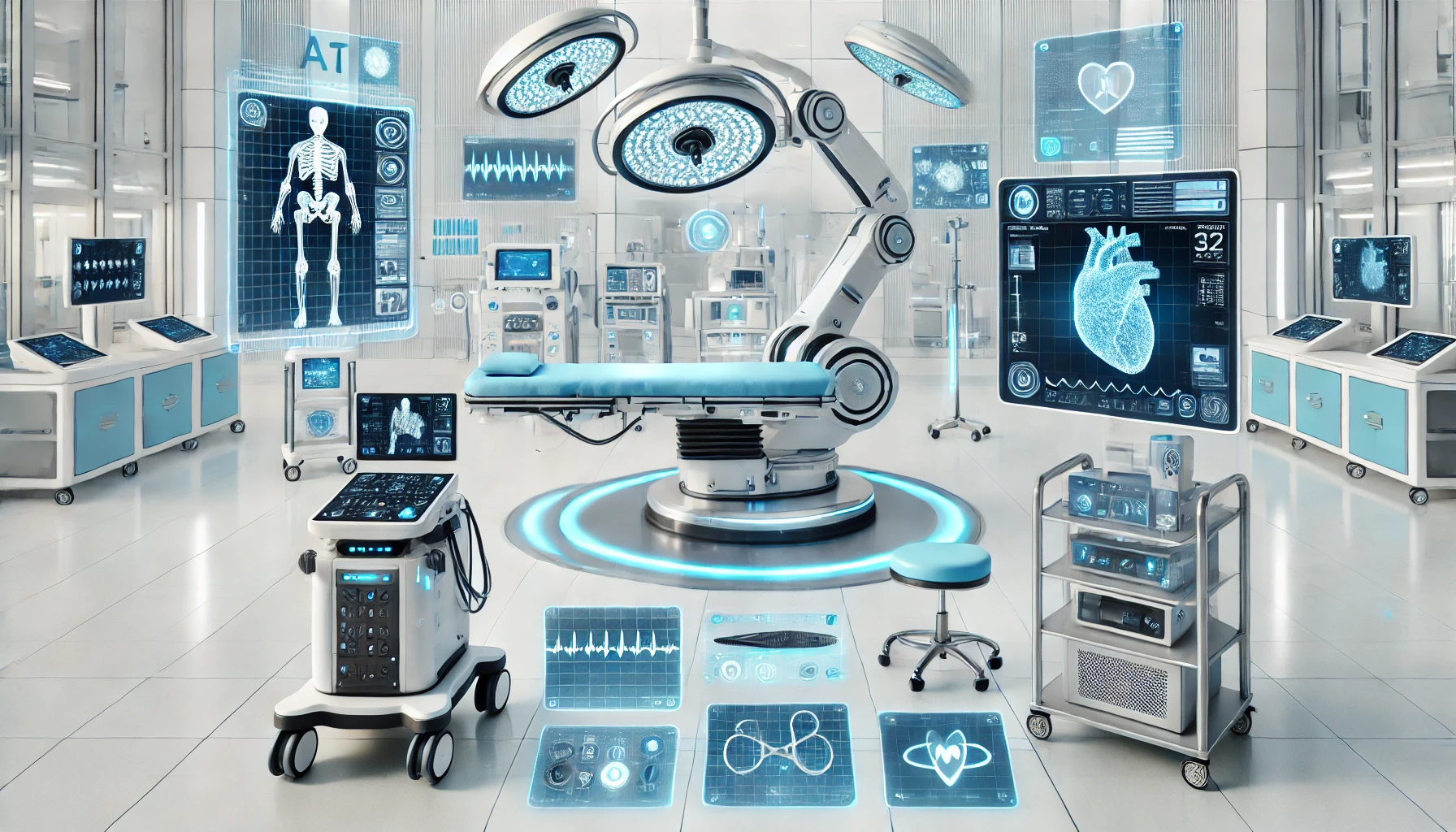
The future of medical equipment is being shaped by advancements in technology, increasing emphasis on patient-centric care, and the need for efficient healthcare delivery systems. Below are some examples of essential medical equipment likely to dominate in the near future:
1. Diagnostic Equipment
- Point-of-Care Testing Devices (POCT):
Portable devices for rapid diagnostic tests, including glucose meters, blood gas analyzers, and infectious disease testing.
- Example: Abbott's i-STAT portable clinical analyzer.
- AI-Driven Imaging Tools:
Enhanced MRI, CT, and X-ray machines powered by AI for faster and more accurate diagnosis.
- Example: Siemens Healthineers' AI-Rad Companion for radiology.
2. Remote Patient Monitoring Systems
- Devices that track patient vitals like heart rate, blood pressure, oxygen levels, and more, enabling telemedicine and home care.
- Example: Philips' IntelliVue patient monitoring system.
3. Surgical and Robotic Equipment
- Robotic-Assisted Surgery Systems:
Robots that assist in minimally invasive procedures, enhancing precision and reducing recovery time.
- Example: Da Vinci Surgical System.
- 3D Printing in Surgery:
Equipment to print custom prosthetics, implants, and even tissue.
- Example: Stratasys J750 Digital Anatomy Printer.
4. Wearable Medical Devices
- Devices worn on the body to monitor health metrics and provide feedback in real-time.
- Example: Fitbit Sense (monitors stress, heart rate, and temperature).
5. Advanced Life Support Systems
- Ventilators with AI Integration:
Devices that automatically adjust oxygen flow and pressure based on patient needs.
- Example: Hamilton Medical's HAMILTON-G5 ventilator.
- ECMO Machines:
Essential for critical care, especially during pandemics or cardiac surgeries.
- Example: Maquet CardioHelp System.
6. Artificial Intelligence (AI) and Machine Learning Devices
- AI-Powered Diagnostic Tools:
Tools that assist in identifying diseases from medical imaging or patient data.
- Example: Zebra Medical Vision for disease detection.
- Chatbots and Virtual Assistants:
To assist patients with routine healthcare questions.
- Example: Ada Health AI-powered health assistant.
7. Advanced Rehabilitation Devices
- Robotic Exoskeletons:
For assisting mobility-impaired patients.
- Example: EksoGT by Ekso Bionics.
- VR for Pain Management and Therapy:
Virtual reality devices to manage pain and improve mental health.
- Example: PainRelieVR by AppliedVR.
8. Infection Control Equipment
- UV Disinfection Robots:
Robots that sterilize spaces using UV light.
- Example: Xenex LightStrike Germ-Zapping Robot.
- Self-Sanitizing Surfaces and Coatings: Equipment designed with antimicrobial surfaces to prevent infections.
9. Portable Imaging Devices
- Compact devices for imaging in remote or low-resource settings.
- Example: Butterfly iQ+ portable ultrasound.
10. Genomics and Biotech Tools
- Gene Sequencers:
Compact sequencers for personalized medicine and gene therapy.
- Example: Illumina MiSeq system.
- CRISPR Technology-Based Equipment:
Tools for gene editing and research.
- Example: Mammoth Biosciences CRISPR diagnostics.
11. Smart Beds
- Beds equipped with sensors to monitor patient vitals and adjust positions to prevent bedsores.
- Example: Hillrom's Centrella Smart+ Bed.
12. AI-Powered Laboratory Equipment
- Automated analyzers for quick and precise laboratory testing.
- Example: Roche cobas pro integrated solutions for clinical chemistry and immunology.
Conclusion
The near future of healthcare will see these essential medical devices integrating with AI, IoT, and robotics to create a more efficient, patient-centric system. From diagnostic tools to advanced life support systems, these innovations will improve healthcare outcomes and accessibility worldwide.





